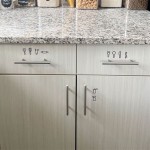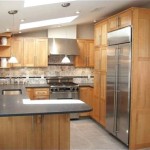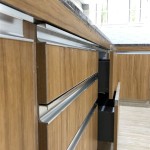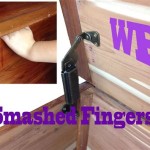How To Put Legs On Kitchen Cabinets
Adding legs to kitchen cabinets can dramatically change the look and feel of a kitchen, creating a more open and airy atmosphere. This seemingly simple upgrade offers several advantages, from increased storage space underneath to enhanced aesthetic appeal. However, proper installation is crucial for stability and longevity. This guide provides a comprehensive step-by-step approach to installing legs on kitchen cabinets.
Planning and Preparation
Before starting the installation process, careful planning is essential. Accurate measurements and appropriate tool selection will ensure a smooth and efficient installation. Neglecting this stage can lead to errors and potentially compromise the integrity of the cabinets.
- Measure Carefully: Measure the height of the desired legs and factor in the thickness of the toe kick, if present. The final height should align with standard countertop heights.
- Choose Suitable Legs: Select legs that can support the weight of the cabinets and their contents. Consider materials like wood, metal, or plastic, choosing a style that complements the kitchen's design.
- Gather Necessary Tools: Assemble all necessary tools, including a drill, measuring tape, level, screws, screwdriver, pencil, safety glasses, and potentially a stud finder.
- Empty the Cabinets: Remove all items from the cabinets to lighten the load and prevent damage to the contents.
- Disconnect Plumbing and Electrical: If the cabinets house plumbing or electrical connections, disconnect them before proceeding. This crucial step prevents accidents and damage.
Detaching the Toe Kick (if applicable)
Many kitchen cabinets feature a toe kick, a recessed area at the bottom of the cabinet. This section often needs removing to properly install the legs.
- Locate the Fasteners: Identify how the toe kick is attached to the cabinets. Common methods include screws or clips.
- Carefully Remove the Toe Kick: Gently detach the toe kick using the appropriate tool, such as a screwdriver or pliers. Avoid damaging the surrounding cabinet structure.
Positioning and Marking
Accurate positioning of the legs is critical for stability and even weight distribution. Proper marking ensures that the legs are aligned correctly.
- Determine Leg Placement: Decide on the optimal placement for the legs, usually at the corners and potentially along the center for longer cabinets. Ensure even spacing to prevent imbalance.
- Mark Leg Locations: Use a pencil to mark the precise location of each leg on the bottom of the cabinet. Double-check the measurements for accuracy.
Attaching the Legs
This step requires precision and attention to detail. Securely attaching the legs ensures the stability of the cabinets.
- Pre-drill Pilot Holes (if necessary): Depending on the cabinet material and leg type, pre-drilling pilot holes can prevent splitting and ensure a secure hold.
- Attach the Legs: Use the appropriate screws to attach the legs to the cabinet, ensuring they are tightly fastened. Use a level to confirm that the legs are plumb.
Reinstalling the Toe Kick (if applicable)
If a toe kick was removed, it may need modifications to accommodate the legs. Careful reinstallation ensures a finished look.
- Modify the Toe Kick (if needed): Cut out sections of the toe kick to fit around the legs. Precise measurements and cutting are crucial for a clean finish.
- Reattach the Toe Kick: Reattach the modified toe kick to the cabinet using the original fasteners or suitable replacements.
Leveling and Adjustments
After attaching the legs, the cabinets must be leveled to ensure a stable and even surface. Proper leveling prevents rocking and ensures proper functionality.
- Place the Cabinets in Position: Carefully move the cabinets back into their desired location.
- Check for Level: Use a level to check the countertop for evenness. Adjust the legs as needed until the cabinets are perfectly level.
- Secure the Cabinets (if necessary): Depending on the cabinet design and location, it may be necessary to secure the cabinets to the wall for added stability. Use appropriate fasteners for the wall type.
Finishing Touches
The final steps involve completing any necessary finishing touches to ensure a polished and professional result.
- Inspect for Gaps: Check for any gaps between the cabinets, walls, or floor. Caulk or fill any gaps for a seamless appearance.
- Touch up Paint or Finishes: If any paint or finishes were scratched or damaged during the process, touch them up for a consistent look.

Make Your Own Frugal Kitchen Cabinet Feet

Adding Decorative Legs To Cooktop Cabinet Sawdust Girl

Diy Decorative Cabinet Feet For Stock Cabinets Addicted 2 Decorating

Adding Decorative Legs To Cooktop Cabinet Sawdust Girl

How To Install Kitchen Cabinets The Wall And Floor With Ease


How To Add Decorative Toe Kicks Your Kitchen Cabinets Jenna Sue Design

Help Where To Add Legs Kitchen Cabinet Credea Ers

Diy Decorative Cabinet Feet For Stock Cabinets Addicted 2 Decorating
504 Main By Holly Lefevre Diy Customizing My Kitchen
Related Posts








